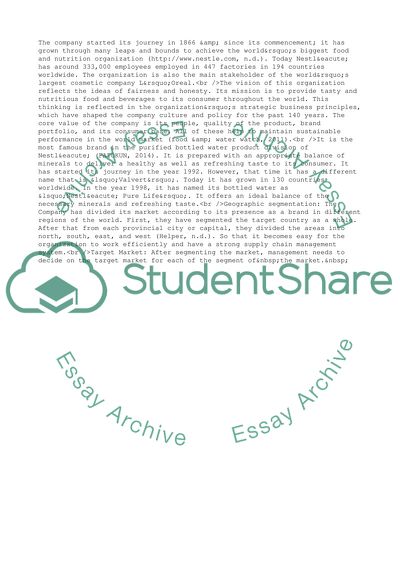Cite this document
(Analysis of the Commerce Environment of Nestl Pure Life Report Example | Topics and Well Written Essays - 2000 words, n.d.)
Analysis of the Commerce Environment of Nestl Pure Life Report Example | Topics and Well Written Essays - 2000 words. https://studentshare.org/business/1836621-marketing-analysis-on-nestle-drinking-waternestle-pure-life
Analysis of the Commerce Environment of Nestl Pure Life Report Example | Topics and Well Written Essays - 2000 words. https://studentshare.org/business/1836621-marketing-analysis-on-nestle-drinking-waternestle-pure-life
(Analysis of the Commerce Environment of Nestl Pure Life Report Example | Topics and Well Written Essays - 2000 Words)
Analysis of the Commerce Environment of Nestl Pure Life Report Example | Topics and Well Written Essays - 2000 Words. https://studentshare.org/business/1836621-marketing-analysis-on-nestle-drinking-waternestle-pure-life.
Analysis of the Commerce Environment of Nestl Pure Life Report Example | Topics and Well Written Essays - 2000 Words. https://studentshare.org/business/1836621-marketing-analysis-on-nestle-drinking-waternestle-pure-life.
“Analysis of the Commerce Environment of Nestl Pure Life Report Example | Topics and Well Written Essays - 2000 Words”. https://studentshare.org/business/1836621-marketing-analysis-on-nestle-drinking-waternestle-pure-life.


